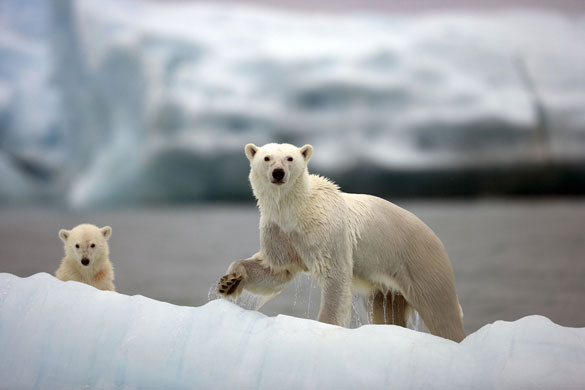
What makes a bad film? A poor script? Bad photography? Unconvincing characters?
'Inside' is a bad film. It ticks all these boxes.
The film takes place in one house for the entire 83 minute running time, following the 'story' (and I use that term loosely) of a pregnant woman who, on the verge of going into labour, is stalked by a nameless stranger who wishes to steal her child for her own. 'Inside' is one of those very dark films, literally, where, when not shown in optimum conditions, is almost impossible to see.
The direction is, in my view, poor, the script (besides being totally unoriginal) is banal and the acting is almost as bad. There was nothing left to the imagination. It seemed to be more of a exibition of bloody prosthetics than a coherent film, and that was all it was, scene after scene of blood and gore; the weapon of choice, a pair of scissors, which ended up in every single bodily orifice possible to inflict mximum pain on the victims. I say 'scene after scene', however that is not eniterly true, the film was pretty much, besides the odd brief flashback, one continuous scene, in which the audience tired of the bland location after about 15 minutes.
 The formula here was clear: one main character who must be kept alive throughout, despite an absurd amount of injuries which, realistically, would have killed her within the first 5 minutes: she will 'sustain' the plot. One crazed killer, make her a woman - more interesting that way, to walk around in shadow and mutilate people with a pair of kitchen scissors. A host of minor characters who will enter the house, answering the womans cry for help, and be mutilated in turn. There you go, a movie!
The formula here was clear: one main character who must be kept alive throughout, despite an absurd amount of injuries which, realistically, would have killed her within the first 5 minutes: she will 'sustain' the plot. One crazed killer, make her a woman - more interesting that way, to walk around in shadow and mutilate people with a pair of kitchen scissors. A host of minor characters who will enter the house, answering the womans cry for help, and be mutilated in turn. There you go, a movie!
The film for the first 70 minutes of 88 contained no supernatural elements whatsoever until, without explanation, a police officer, who has seemingly been killed, turns into a zombie and stumbles about, missing both his eyes and one arm, making groaning noises. This is the first and last paranormal element to the film, completely unexplained.
'Inside' is a bad film. It ticks all these boxes.
The film takes place in one house for the entire 83 minute running time, following the 'story' (and I use that term loosely) of a pregnant woman who, on the verge of going into labour, is stalked by a nameless stranger who wishes to steal her child for her own. 'Inside' is one of those very dark films, literally, where, when not shown in optimum conditions, is almost impossible to see.
The direction is, in my view, poor, the script (besides being totally unoriginal) is banal and the acting is almost as bad. There was nothing left to the imagination. It seemed to be more of a exibition of bloody prosthetics than a coherent film, and that was all it was, scene after scene of blood and gore; the weapon of choice, a pair of scissors, which ended up in every single bodily orifice possible to inflict mximum pain on the victims. I say 'scene after scene', however that is not eniterly true, the film was pretty much, besides the odd brief flashback, one continuous scene, in which the audience tired of the bland location after about 15 minutes.
 The formula here was clear: one main character who must be kept alive throughout, despite an absurd amount of injuries which, realistically, would have killed her within the first 5 minutes: she will 'sustain' the plot. One crazed killer, make her a woman - more interesting that way, to walk around in shadow and mutilate people with a pair of kitchen scissors. A host of minor characters who will enter the house, answering the womans cry for help, and be mutilated in turn. There you go, a movie!
The formula here was clear: one main character who must be kept alive throughout, despite an absurd amount of injuries which, realistically, would have killed her within the first 5 minutes: she will 'sustain' the plot. One crazed killer, make her a woman - more interesting that way, to walk around in shadow and mutilate people with a pair of kitchen scissors. A host of minor characters who will enter the house, answering the womans cry for help, and be mutilated in turn. There you go, a movie!
The film for the first 70 minutes of 88 contained no supernatural elements whatsoever until, without explanation, a police officer, who has seemingly been killed, turns into a zombie and stumbles about, missing both his eyes and one arm, making groaning noises. This is the first and last paranormal element to the film, completely unexplained.
You might think, after all this gore, there may be some message to come out at the end, perhaps - "don't try and steal other people's unborn babies and kill a mass of people along the way because its wrong", no, infact, the crazed killer succeeds in stealing the baby, by performing a successful cesarean section with the blunt scissors and that is how the film ends, with the killer cradling the baby in a darkened room.
Fabulous!






